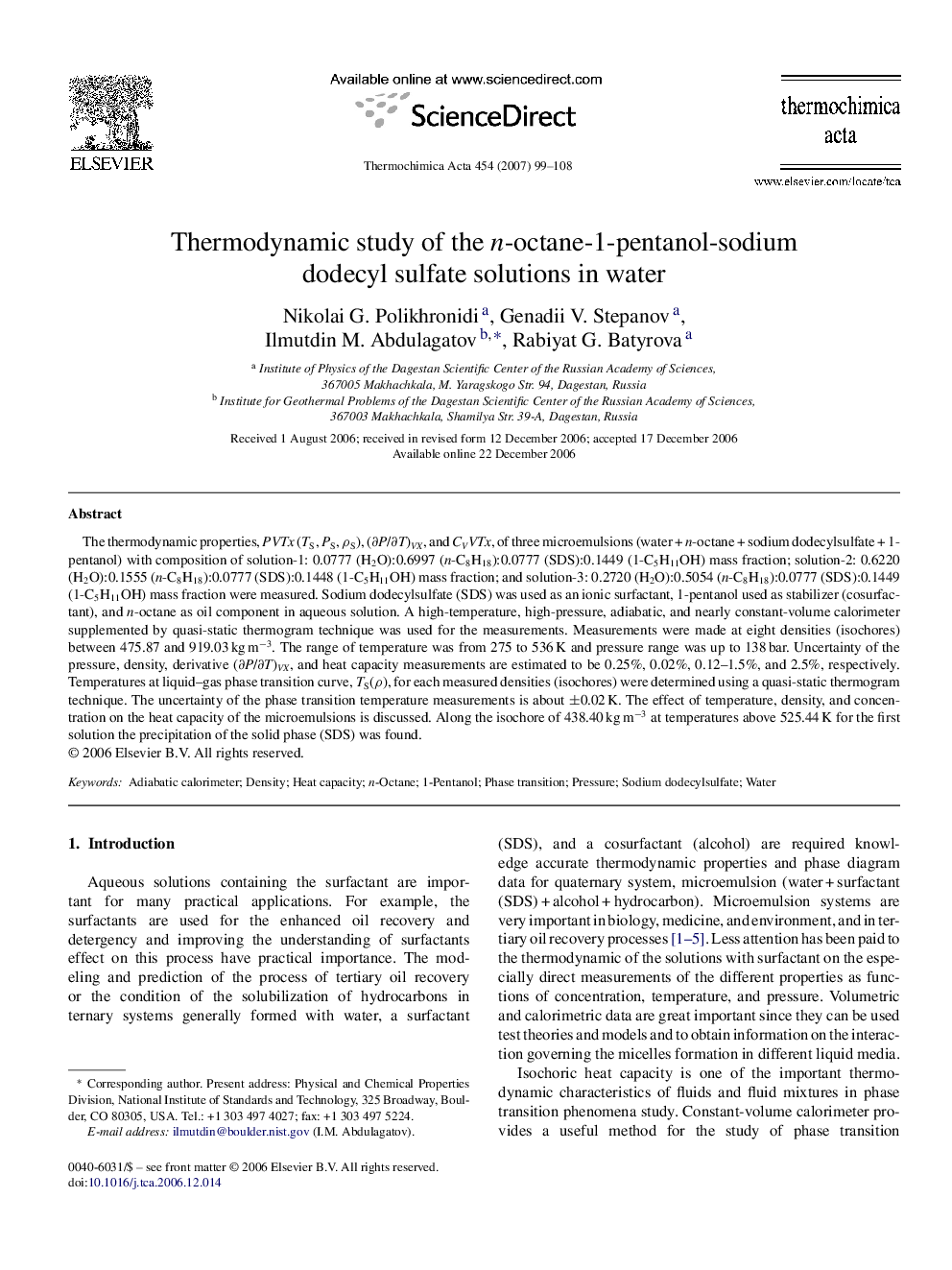| Article ID | Journal | Published Year | Pages | File Type |
|---|---|---|---|---|
| 675556 | Thermochimica Acta | 2007 | 10 Pages |
The thermodynamic properties, PVTx (TS, PS, ρS), (∂P/∂T)VX, and CVVTx, of three microemulsions (water + n-octane + sodium dodecylsulfate + 1-pentanol) with composition of solution-1: 0.0777 (H2O):0.6997 (n-C8H18):0.0777 (SDS):0.1449 (1-C5H11OH) mass fraction; solution-2: 0.6220 (H2O):0.1555 (n-C8H18):0.0777 (SDS):0.1448 (1-C5H11OH) mass fraction; and solution-3: 0.2720 (H2O):0.5054 (n-C8H18):0.0777 (SDS):0.1449 (1-C5H11OH) mass fraction were measured. Sodium dodecylsulfate (SDS) was used as an ionic surfactant, 1-pentanol used as stabilizer (cosurfactant), and n-octane as oil component in aqueous solution. A high-temperature, high-pressure, adiabatic, and nearly constant-volume calorimeter supplemented by quasi-static thermogram technique was used for the measurements. Measurements were made at eight densities (isochores) between 475.87 and 919.03 kg m−3. The range of temperature was from 275 to 536 K and pressure range was up to 138 bar. Uncertainty of the pressure, density, derivative (∂P/∂T)VX, and heat capacity measurements are estimated to be 0.25%, 0.02%, 0.12–1.5%, and 2.5%, respectively. Temperatures at liquid–gas phase transition curve, TS(ρ), for each measured densities (isochores) were determined using a quasi-static thermogram technique. The uncertainty of the phase transition temperature measurements is about ±0.02 K. The effect of temperature, density, and concentration on the heat capacity of the microemulsions is discussed. Along the isochore of 438.40 kg m−3 at temperatures above 525.44 K for the first solution the precipitation of the solid phase (SDS) was found.
